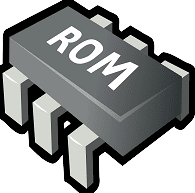CPU - Central Processing Unit
The human brain has two parts. One which controls all our actions and the other which stores all the things to be remembered. Similarly, the computer has a control unit which controls the computer's actions i.e. all the input from input devices and output to the output devices, and a memory unit where the computer stores things to be remembered.
The control center of the brain also controls our memory capacity. The control unit of the computer controls the data and instructions that are to be stored or retrieved from its memory unit.
ALU: The human brain also has an arithmetic slot wherein all calculations are done. Similarly, the computer has an Arithmetic and Logic Unit (ALU), which does all the calculations and logical functions.
The Control unit, Arithmetic Logic Unit (ALU), and memory unit together form the central processing unit (CPU) of the computer.
The memory unit of the computer is further divided into Random Access Memory (RAM), Read-Only Memory (ROM), and Cache pronounced ("CASH") memory.
ROM: The Full Form Of ROM is Read Only Memory. Read-Only Memory (ROM) is a different kind of storage medium used in systems and other electronic devices that can be read only.

RAM: Random Access Memory is used to store the data and instructions that are currently being processed. This memory can be randomly accessed and is also called immediate access memory. The RAM (RANDOM ACCESS MEMORY) however is volatile meaning the memory is erased when the power supply is cut off.

The CPU of a modern computer is fully electronic, i.e., it does not contain any moving parts. It is made up of millions of electronic components etched onto a number of silicon chips. These chips are all assembled on a Printed Circuit Board called the "Motherboard". On large machines, CPUs require one or more printed circuit boards. On personal computers and small workstations, the CPU is housed in a single chip called a microprocessor.
Functions of the CPU
- To store data and instructions
- To control the sequence of operations
- To carry out processing
The CPU fetches the instruction from memory, decodes the instruction, and executes the instruction by communicating with the input/output devices and the memory.
Central Processing Unit (CPU)
Inside The CPU
Inside the computer system, there are different components that enable the computer to function. Some of these components are:

- Motherboard
- Micro Processor
- RAM
- ROM
- Hard Disk
Motherboard
A motherboard is the central printed circuit board (PCB) in many modern computers. It holds many crucial components of the system and provides connectors for other peripherals. The motherboard is sometimes alliteratively known as the main board or system board. Most computer motherboards produced today are designed for IBM-compatible computers. A motherboard provides the electrical connections by which the other components of the system communicate. It also connects the central processing unit and hosts other sub-systems and devices.
Micro Processor
Physically, the CPU (Central Processing Unit) is a bank of electronic circuits for the Control Unit, Arithmetic Unit, and Memory Unit etched on silicon chips.

The microprocessor consists of the control and the arithmetic logic unit of a computer etched onto a single silicon chip of a size so small that it can be placed on the tip of your little finger. The memory chips are separate. Companies like Intel Corporation, AMD (Advanced Micro Devices), and Motorola are popular manufacturers of microprocessors. The first microprocessors operated on 8 bits of data at a time. Later processors considered 16 bits as one word, and such processors were said to have a word length of 16 bits and had better processing speed. For example, the Intel 80286 was a popular 16-bit microprocessor.
Leave a comment